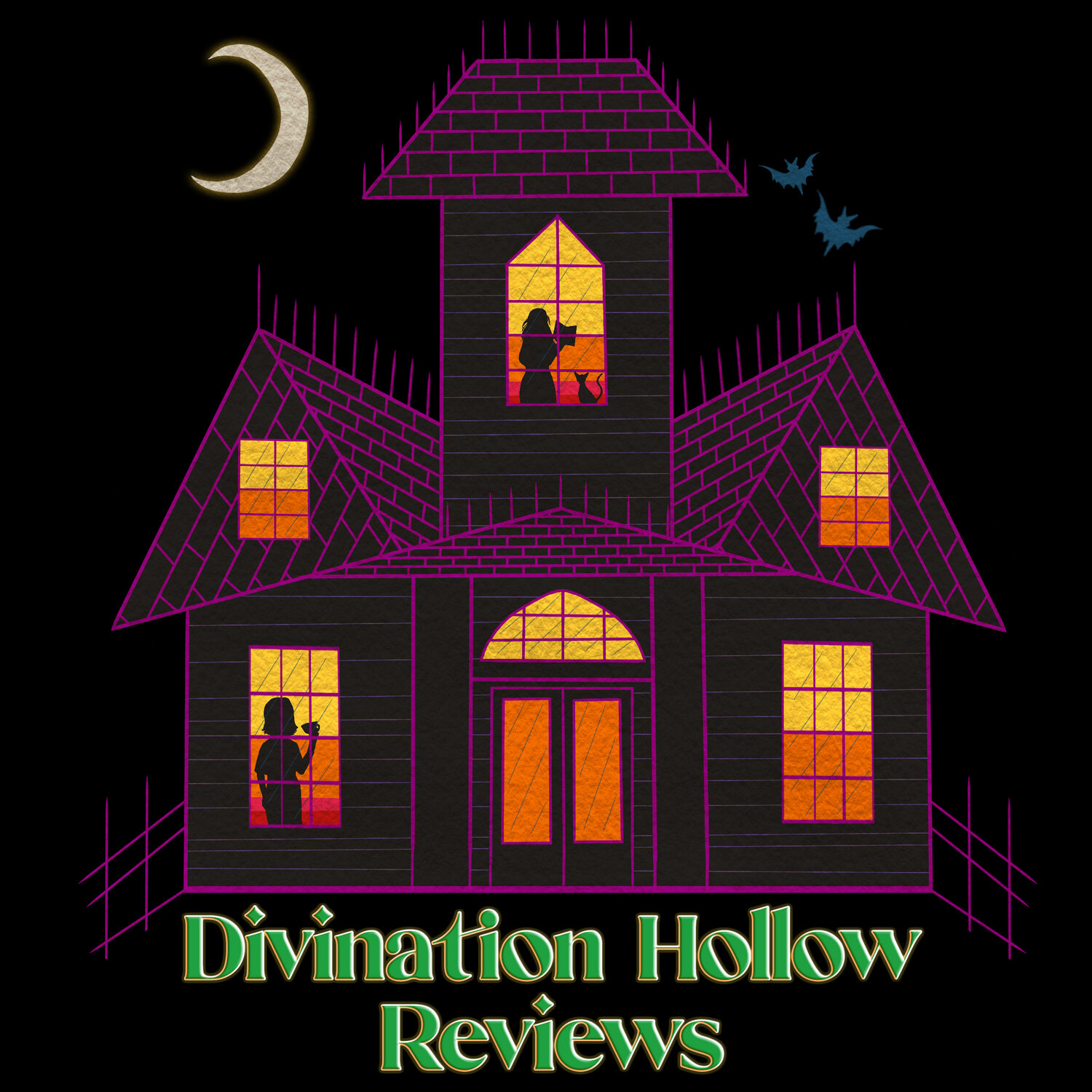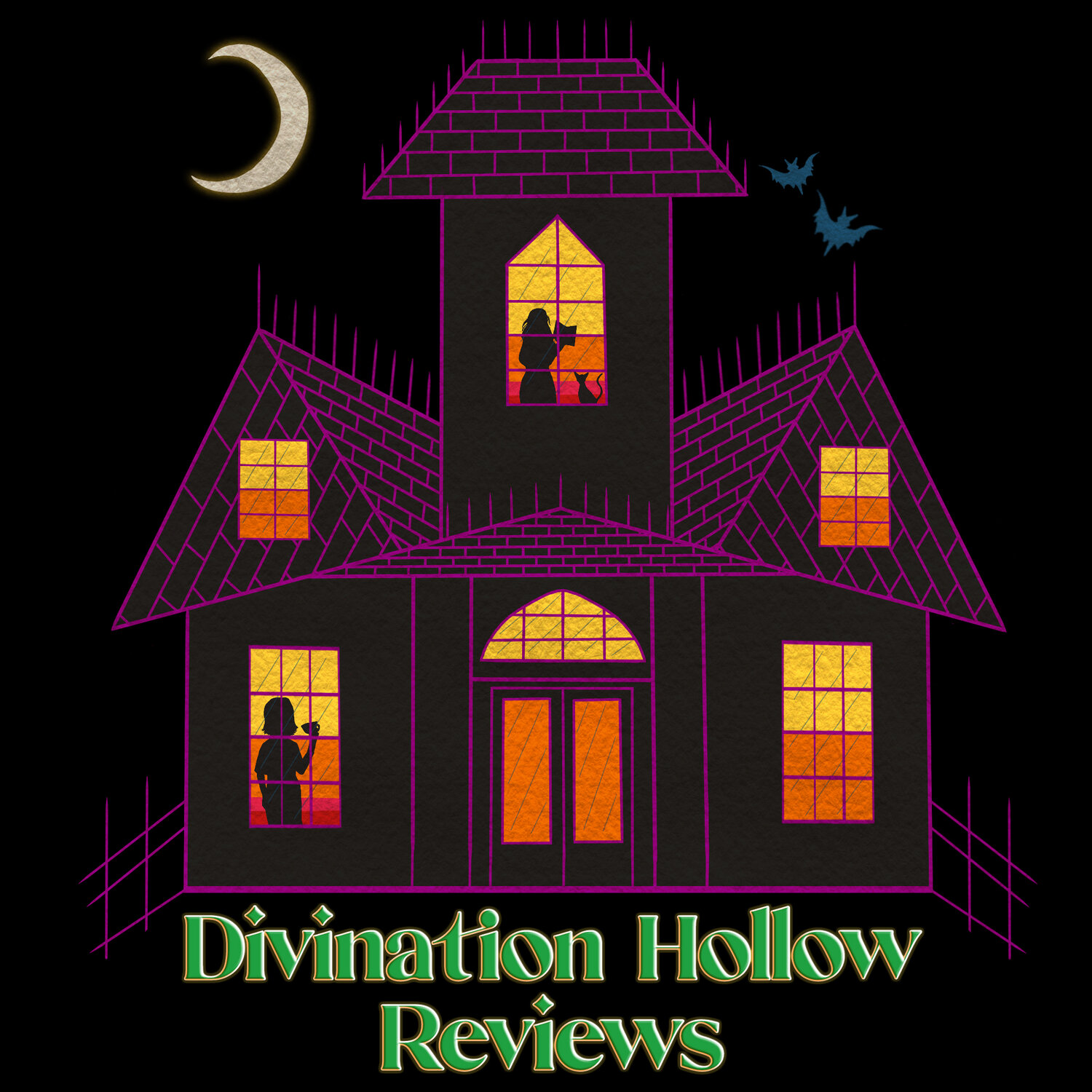Women in Horror Month: Folk Horror and the Cottagecore Lesbian
What do Miss Honey from Matilda (1996) and Dani from Midsommar (2019) have in common? They’re both unofficial lesbian icons that fit into the “cottagecore” aesthetic. They are fictional female characters from cult classic films. They are women who identify strongly with nature. They are, in different ways, beacons of femininity in stories that are otherwise harshly riddled with misogyny. Neither character is necessarily labeled queer, yet both have amassed fandoms of queer women and non-binary film lovers.
Comparing the characters and their films may seem like a rather long stretch. Matilda can hardly be considered a horror film (although one could argue that child abuse in any form is one of the most terrifying realities there is) while Midsommar is explicitly marketed as such. Miss Honey is a kind-hearted teacher whose simple lifestyle charms young Matilda while she deals with the cruelties of other adults in her life. Dani is a foreigner stuck in a dysfunctional and unhealthy relationship who finds a new community for herself within a rural commune in Sweden. Both Miss Honey and Dani represent a feminine connection with nature that many of us queer folk flock to. But why?
I argue that the reason for this is that both of these characters mirror a subset of people (many of which are queer women) who embrace what is being called the “cottagecore” lifestyle and its aesthetic. This idea of living simply and in harmony with nature is hardly a new one and the 21st century’s resurgence of it only proves that humans have, and always will continue to have a strong connection with Earth. The most recent rendition of an idealization for rural living known to us as “cottagecore” stems from the rising opposition to capitalist-consumerist society and its dependence on advanced technology.
According to a 2021 article in The Vou, the cottagecore movement can be defined by both parts of its name: cottage and core. Those who subscribe to this aesthetic value simple, rural living that includes gardening, respecting nature, and often (but not always) eschewing technology. While these values and lifestyles have always existed, the term “cottagecore” itself became popular in 2017 and has proliferated ever since. Social media apps like Tumblr, Instagram, and TikTok have helped build a community of people idolizing and striving for this lifestyle (Saxon 2017).
New York Times writer Isabel Slone describes the trend by saying, "Take modern escapist fantasies like tiny homes, voluntary simplicity, forest bathing, and screen-free childhoods, then place them inside a delicate, moss-filled terrarium, and the result will look a lot like cottagecore” (Slone 2020). Followers tend to enjoy baking, growing their own food, and keeping a tidy cabin in the woods. Despite what appears on the outside to be the lifestyle of a subservient wife, cottagecore rejects toxic masculinity and the inequality of the sexes that it promotes. Women are embracing this lifestyle for themselves and their connection to nature rather than choosing to support a typical patriarchal nuclear family dynamic.
There are darker aspects to the cottagecore lifestyle as well, and these can be found at the intersection of horror and nature. Remote living in the “wild” (even when self-imposed) lends itself to the darker side of nature. This is an atmosphere often explored in horror films, specifically those of the “folk horror” genre. This subgenre of horror uses elements of folklore and nature to invoke fear and dread. Often containing themes of isolation, religion, and the power of nature, folk horror targets the most primitive terrors latent inside of us as homo sapiens.
Folk horror films tend to tackle some of the problems that are most often considered as inherently feminine. In 2018’s breakthrough horror film by director Ari Aster, Hereditary, Paimon the demon is stuck in the inferior body of the female offspring and must work his way into her brother instead. However, despite this traditionally patriarchal problem, it is the female characters that carry the film itself. The siblings’ mother, Annie (played by the amazing Toni Collette) almost drives herself insane investigating the dark dealing of her late mother. It is the women who control the events in the film and yet it all still boils down to Paimon finding the perfect masculine form to take. Despite the women doing the work, it is the male who wears the crown.
In Midsommar, after Dani witnessed her boyfriend in ritualized sex with a cult member, she expressed her anguish in crying, surrounded by other women moaning in tandem. This is metaphoric for the shared empathy between women- especially for those mistreated by men. Motherhood - and the various aspects relating to it - is also a particularly nuanced issue closely intertwined within the folk horror genre. In 2017’s Pyewacket, teenager Leah acts on her emotions and performs dark magic to get rid of her mother. The consequences are swift and deadly. Her range of emotions is expressed through the horror of her rural life: guilt, regret, fear, etc. Her terror is always intertwined with the forest and the ghostly scenes it presents. Nature is emotion in its purest form, something that has long been connected to femininity. And what could be more terrifying than unbridled emotion?
Some of the most popular folk horror films villainize females and feminine energy. In 1973’s classic The Wicker Man, a lone Christian male hero is pit against a community of devious women who have embraced Celtic paganism. In 2015’s The Witch, the villain is not only the titular magical female who has made a covenant with the devil, but there is also the horror of the family’s patriarch accusing his own daughter of witchcraft without any evidence. In Midsommar, the community is paying homage to nature, and it is surrounded by the most beautiful and colorful of flowers where Dani makes the ultimate choice to sacrifice her toxic boyfriend. These films remind us that Mother Nature is arguably the most powerful force of all and she is nothing if not the divine feminine.
In her essay “Pretty Little Cults,” author Katherine Connell says that Midsommar shows “how beauty (especially women’s beauty), horror, and violence collide on screen.” She goes on to describe how folk horror was popular in the 1960s and 1970s because it “channeled the mainstream fear of 1960s counterculture.” This counterculture is inexplicably tied into cult culture - another theme of the film. One that became front-and-center in the mid-20th century–thanks to famous families like the Mansons. During this time, women were regaining their individuality and sense of freedom. They were using their feminine energy to steer away from shadowy housewives and towards the flower child mentality of peace, harmony, and equality (Connell 2020).
However, romanticizing rural and farm lifestyles can, of course, come with its drawbacks, especially when considering the double standards in place. Similar to the hipster movement of gentrified neighborhoods, it has become in some ways a trend that benefits the wealthy who practice lifestyles that others may be ridiculed for. It’s certainly possible that those who have the option to embrace the cottagecore mystique may completely misunderstand the harsh realities of others. Others scratch a living out of the Earth in near-poverty and without the choice to change their lifestyle should they wish to. The irony is that many self-described cottagecore patrons discovered–and continue their interest in–the aesthetic through digital technology.
It’s important to note that while many audiences may picture both cottagecore and folk horror through a Caucasian lens, neither topic should be remotely whitewashed. Folk horror and the embracing of nature are things that reach (and have always been ingrained in) every community in every part of the globe. In fact, some of the best and most prolific examples of folk horror come from Southeast Asia. Folk beliefs from Indonesian, Thai, Malay, and Dayak cultures are prevalent in these films and create some of the most powerful and terrifying stories. People of color and non-white societies have just as many stories to tell and often theirs predate those of the Tumblr cottagecore lesbian. We should be conscientious of highlighting the significance and importance diversity represents in horror, especially folk horror.
Females will always be ridiculed in our patriarchal society. If too “masculine”, they are labeled a “tomboy” or shamed for embracing the “dyke” or “butch” identity in the queer community. Yet if too feminine, women are called weak and belittled for being less than. Why must everything be measured on a binary masculine/feminine scale anyway? When and where did society decide that there must be a complete separation of genders? If we can’t easily fight against the binary way of thinking, perhaps that is why so many women are embracing it as a way to fight that subjugation.
There is a vocal group of people on TikTok proclaiming that hyper-feminity is a direct challenge to straight cis-men and this makes sense. Whereas women of yesteryear may have dressed or acted in specifically feminine ways in order to attract or please men, those of us who choose to embrace hyper-feminity now often do it for ourselves. In reclaiming our femininity for ourself, without giving up our independent feminist values, we are saying we are strong, powerful, capable, and terrifying–and the patriarchy should watch out.
Nature is raw and terrifying–and so are women. Extreme femininity is scary, and perhaps threatening to many people (especially cishet men in power of the patriarchal society we live in). This is why typically organized religion and other patriarchal societies have worked so hard to hold women–and anyone who embraces their femininity–down. It is from their fear of the feminine that they trivialize us with witch hunts, unequal marriage roles, and the devaluing of traditional “women’s work.” Hence why folk horror often resonates deeply with the queer community. It dances on the boundary lines of fear and repression.
The most successful folk horror films embrace the ambiguity of nature and gender. The audience is often left uncertain as to the main character(s) journey into the true predicament or villain they face. No matter what, one force always rules supreme, and that is Mother Nature. She sees through what the audience- and characters- can not. She doles out punishment and praises harshly as she sees fit. This Earthly power resonates with many people and essentially defines the cottagecore lifestyle. Mother Earth is all-encompassing and only she controls life and death, not humans- and certainly not men.
Why does cottagecore attract so many gay, lesbian and queer women (and non-binary) folks? In an article for Paper Magazine, Katherine Gillespie says, “The politics of cottagecore are thoughtfully prelapsarian: what if we could go back to a time before the planet was ravaged by industry, except with added protections for marginalized queer communities? What if we all lived like trade wives, minus the husbands?” (Gillespie 2020). Many queer people feel isolated from their traditional communities to begin with, so why not create their own form of isolation that is not only appealing but in their control? They can isolate themselves from the angry, judgmental, rigid world of men and instead embrace the warm and loving world of Mother Nature (Medhurst 2020).
In her video, “why is cottagecore so gay?” Rowan Ellis says “For queer and sapphic women, [cottagecore] allows them to imagine a space without homophobia, fear, and judgment, that doesn’t feel like a banishment but instead a specifically curated paradise.” The all-natural, DIY, handcrafted feel of the cottagecore lifestyle is familiar terrain for many queer women and gender-non-conforming people (Ellis 2020). Dressing to express ourselves without fear of reprimand or ridicule is an important part of living in today’s world. The cottagecore aesthetic allows many people to skew from what’s considered traditional and find their own sense of self-expression.
The typical cottagecore woman will most likely be envisioned as wearing long dresses with her loose hair blowing in the wind and adorned with flowers. She is delicate but strong- a beacon of femininity with the strength required to live from the land and off the grid. These people bake their own bread, grow their own food, and use their connection with nature as a way to heal themselves from the toxicity of the modern industrial world. They use rustic hobbies as a way to manage their mental health. As women for centuries have been known to be powerful healers (most of the time through their connection with Mother Earth), it is not surprising that embracing the cottagecore lifestyle can give women more power alongside their traditionally feminine qualities that today’s world so often tries to push down.
Even within the ever-growing LGBTQIA+ community, stereotypes and microaggressions run rampant. Many femme-presenting lesbians or queer folk bemoan the fact that they “pass” too easily as living a heteronormative lifestyle, despite the fact that they enjoy embracing the traditionally “feminine” aesthetic they exude. As someone who considers herself part of this community, I get it. My personal style (the aesthetic that makes me happy to embrace and represents me best) is ultra-feminine. This can sometimes feel at odds with my queer identity- both inside and outside of the community. Rachel (who goes by the handle faythegay on TikTok) claims that “cottagecore culture has somehow become a staple of lesbian culture” and that this adoption has made it easier for femme or femme-presenting people to be accepted (and specifically identified) in the queer community (@faythegay).
2018’s What Keeps You Alive is a fantastic example of the merging of the cottagecore lesbian and the folk horror equation. The scenery is gorgeous. The lakes, forests, and mountains from the filming location of Ontario lend to a deceptively peaceful feeling. Married lesbian couple Jules and Jackie are celebrating their first anniversary in Jackie’s family’s cabin. As Jules meets people from her wife’s childhood, she becomes suspicious of Jackie’s actions and intent. The thriller turns into a folk horror as Jules fights for survival in this remote location while avoiding the wrath of her homicidal feminine life partner. What’s especially refreshing about this film is that it turns the “final girl” trope on its head- offering a dizzying lineup of the feminine in all shades of black, white, and gray.
Embracing my love for folk horror and my traditionally “feminine” yet still decidedly queer lifestyle go hand-in-hand for me. I feel a connection with this sub-genre because of its reverence for nature. We are in awe of the planet and at the same time terrified of its raw power. Being a “femme” queer woman reminds me of the underlying themes of folk horror- hidden frights underneath simple beauty. On the outside, I may look like a well-mannered heterosexual straight girl but, on the inside, I feel roiling rebellion. I am secretly (and symbolically) a traitor to heteronormativity. What may appear to be a seemingly benign landscape within a folk horror tale actually holds immense complexity of hidden beauty and unexpected dangers.
After years of repression by the patriarchy, the last thing a queer person coming to terms with their sexuality and identity wants is to feel that same disregard for femininity from their newfound community. I applaud the blossoming “cottagecore” movement as it allows women to embrace the traditionally feminine aspects of themselves that they love and use them to dispel myths of gender inequality and sexual preference, even in light of continued stereotypes embedded deep within the queer community. I am proud to be a queer woman who loves other women and loves the feminine aspects of them, and more importantly, of myself. After all, being yourself is the most terrifying, yet most powerful action we can take–not only for others, not only for representation but for ourselves.
Originally published in Queerlings Magazine Issue 6 (July 2022)
References
Connell, Katherine. 2020. “Pretty Little Cults.” Another Gaze, July 28, 2020.
Ellis, Rowan. “why is cottagecore so gay?” YouTube Video, 28:57, July 30, 2020.
@faythegay. TikTok Account. Various Videos.
Gillespie, Katherine. 2020. “TikTok's Cottagecore Influencers Explain the Trend.” Paper
Magazine, April 24, 2020.
Medhurst, Eleanor. 2020. “Cottagecore Lesbians and the Ladydyke Legacy.” Dressingdykes.com,
August 28, 2020.
Saxon, Katherine. 2021. “Cottagecore EXPLAINED – What It Is, How It Started, Why Is So
POPULAR.” The Vou, October 6, 2021.
Slone, Isabel. 2020. “Escape Into Cottagecore, Calming Ethos for Our Febrile Moment.” The
New York Times, March 10, 2020.
Jamie Zaccaria is a wildlife conservationist by trade and writer by pleasure. She currently works for an ocean exploration organization and writes fiction in her spare time. Her anthology collection of short stories will be released by Wildling Press in 2023. For a complete portfolio, please visit www.jamiezaccaria.com








